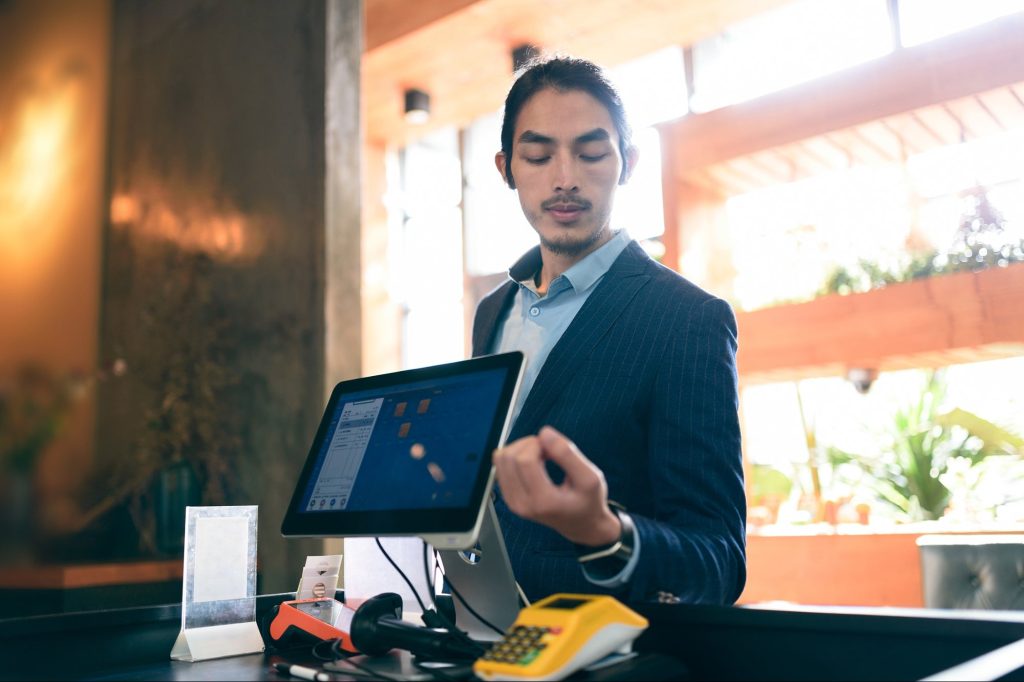The word automation often gets a bad rap. In the past, many restaurants have been hesitant to adopt new technologies — sometimes out of fear of the unknown and sometimes out of fear of losing the human touch that is so necessary when running a restaurant. Now, all of that’s changing.
Automation is now more accessible than ever. 57% of restaurants agree that adding new technology in the last two years has been critical to their business’ survival. Out of necessity, many restaurant owners adopted automation technologies during the pandemic. They were surprised by how much automation could actually make complex tasks easier, helping them run their businesses much more efficiently without losing that key human element.
From online ordering to kitchen displays, check out our top 5 automation technologies your business can’t be without.
Related: Kitchen Automation Is Revolutionizing the Food Industry
1. Online and QR code ordering
Online ordering lets customers place orders on their phones, using digital menus or QR codes when dining in-house or even ordering takeout. This method of ordering gives customers more control over their dining experience and also frees up staff to focus on the overall customer experience instead of just taking orders.
Online ordering has grown substantially in the last few years, and according to a recent Lightspeed survey, it was one of the three most adopted technology tools in 2022 next to task automation technology (including QR code ordering) and employee shift management technology. 36% of businesses agreed that, out of all the tools, new or expanded online ordering systems improved their business the most.
Online ordering can also help drive revenue. 34% of consumers that order food online spend at least $50 per order, and customers that order online will visit 67% more frequently than those that don’t.
Related: The Digital Divide: 3 Reasons Why Some Restaurants Outperform Others
2. Customer-facing displays
Transparency is key when transacting with customers. In quick-service settings, having a customer-facing display can reduce back-and-forth and potential problems at the checkout. A customer-facing display is a screen often placed at the point of sale which displays a breakdown of the order and lists checkout totals, percentages, items purchased and any other essential information for the customer. Adding displays to your setup creates a better overall experience and reduces potential mistakes at the cash.
3. Delivery and takeout platforms
From fine dining to quick-service restaurants, more restaurants than ever are offering delivery. Ordering for delivery is now a regular habit for most households, with 60% of U.S. consumers ordering delivery or takeout at least once a week. Managing delivery in-house, however, can be costly and difficult logistically. Many restaurants use third-party platforms like Uber Eats and DoorDash to offer delivery and reach more customers. With so many competing platforms managing delivery orders coming in can be tough. Finding a point of sale that automatically syncs all of your delivery orders in one place will help you manage incoming orders without a hitch.
Related: 3 Automated Lead Generation Strategies To Implement In Your Sales Process
4. Kitchen display systems
A restaurant is as good as the communication between the front and back of house. When using pen and paper, printers or even memory to take down orders, it’s easy for orders to get misplaced or mistaken when informing the back-of-house staff. Kitchen displays are a great fix to the ever-present communication problem.
These displays are located in the back of the house and let staff view orders coming in. With a kitchen display, there’s less back and forth and running around in front of the house and fewer mistakes, clutter or waste. Kitchen displays paired with iPads make the information flow seamless, ensuring that whatever is input gets passed on to the kitchen staff.
5. Automated inventory management
Inventory management can make or break a restaurant. Do it right, save on costs and ensure you always have everything you need. Do it wrong; you’ll run out of critical items during busy shifts and see your inventory costs and waste increase. This essential step can’t be underestimated. Inventory management is also a regular day-to-day process that can easily fall prey to human error. Automation simplifies inventory counts, helping restaurants reduce waste and keep track of ingredient usage. With automated inventory management software linked to your point of sale, you can easily find out how much food you have on hand, how much you used up and how much you need to order.
Automation is here for good
From staff shortages to price increases, restaurants need to adapt in order to succeed or even survive the neverending challenges the industry is facing. Adopting automation technologies will not only help restaurants find ways to save and reduce expenses, but it will free up staff so that they can focus on what matters most: providing an amazing experience and keeping customers happy.
Read the full article here










